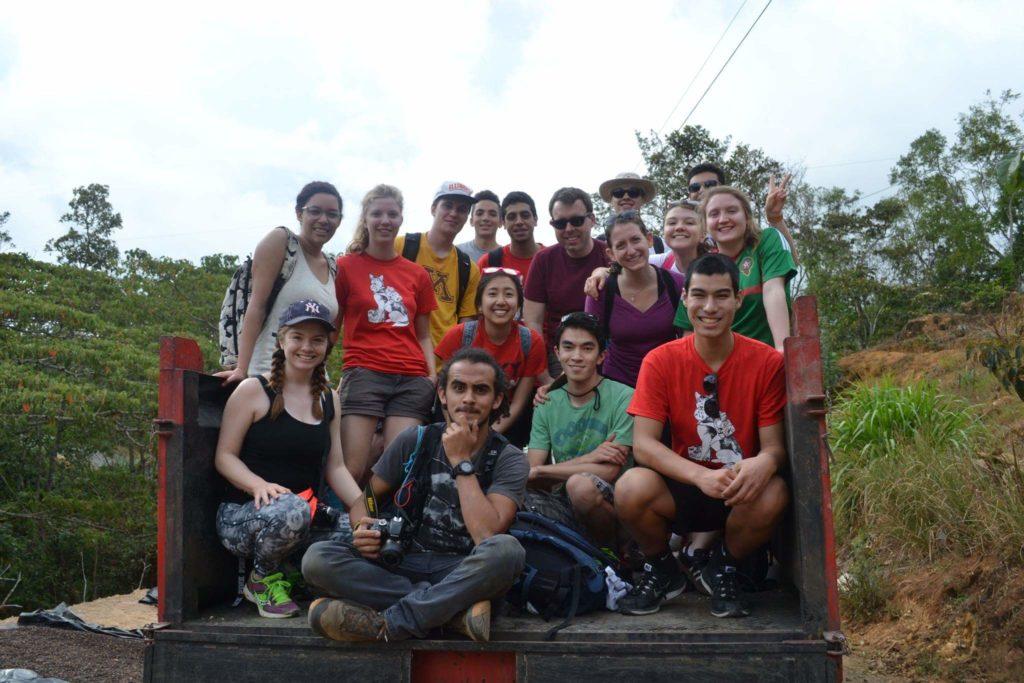By Lautaro Grinspan, news correspondent
For the 14th–straight year, a cohort of Northeastern University (NU) students dedicated their spring break to charity, scattering far and wide to participate in Alternative Spring Break (ASB) service programs.
One hundred and seventy-eight students participated in 18 trips across the US and five Latin American nations this year. Programs ranged from volunteering in an animal sanctuary in Utah to working in food production in Puerto Rico. By all accounts, the ASB program has come a long way since its 2003 debut, when only one service trip was offered.
“A couple of years ago, we started partnering with other university departments to run co-sponsored trips that are specific to those students,” said Anna Gilmore, assistant director of community service programs and events. “That segment of the program has grown quickly. Our partner departments have found it to be a successful way to incorporate a different and exciting program option that aligns with their individual curriculum.”
New this year was a partnership with the University Scholars program, which led to the creation of four co-sponsored trips. Other, older co-sponsors include the Honors Program and the Latino/a Student Cultural Center.
Rose Leopold, a junior political science major, participated in her first ASB program this year. Leopold and her peers volunteered at a local school in San Marcos de Tarrazu, Costa Rica and learned about coffee production.
“Our daily routine consisted of a traditional Costa Rican breakfast and then a long trek straight uphill to the elementary school we were volunteering at,” she said. “In the afternoons, we would finish around 2:30 or 3 and then visit the town we were staying in. The first two days we also visited a cooperative coffee farm and a micromill. It was super interesting to see the difference between the two sizes of coffee production and to learn all about how coffee is produced from bean to roasting.”
Third-year mechanical engineering major Mary Morrison spent her spring break in San Juan, Texas, a city straddling the US-Mexico border. In coordination with La Union del Pueblo Entero, she and the other student volunteers participated in various service activities, all aimed at helping them understand the wide variety of social justice issues faced by immigrants.
“What drew me to the program in the first place is the topic of immigration,” Morrison said. “I grew up learning what immigration is but never learned how the current laws affect real people who are fleeing situations in Mexico and cannot gain asylum or refugee status. This ASB was insightful, informative and such an amazing experience.”
Every ASB trip includes a component of reflection. Morrison enjoyed getting to sit down daily and exchange ideas with her fellow volunteers, many of whom were immigrants themselves.
“The conversations we had made us laugh and cry and struggle with this idea of the American dream and how unfair it is that people born in countries that are not favored by the US are deemed unequal,” she said. “If you volunteer, you are physically helping people in the moment, but if you volunteer and reflect, those are where ideas formulate and turn into actions.”
The ASB program did have to navigate one speed bump this year: The mosquito-borne Zika virus. Many of the programs held abroad took place in areas marked by the Center for Disease Control and Prevention (CDC) as countries with active Zika virus transmission.
“Zika was something we looked into closely, because nothing is more important than the safety of our volunteers,” Gilmore said. “We regularly checked both the CDC and the State Department for travel warnings. We reiterated the university’s message about Zika to all of our participants directly.”
Looking forward, Gilmore hopes more students will be able to take part in more programs.
“My vision for the future of the program is to diversify our trip offerings, offer Alternative Weekends a few times per year and make the program more accessible for all students,” she said.
Photos courtesy of Rose Leopold









